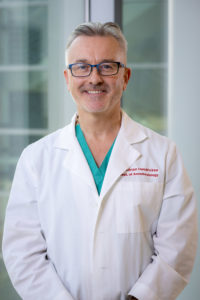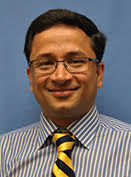Utilization and outcomes of deceased donor SARS-CoV-2–positive organs for solid organ transplantation in the United States.
Abstract:
Coronavirus disease-19 has had a marked impact on the transplant population and processes of care for transplant centers and organ allocation. Several single-center studies have reported successful utilization of deceased donors with positive severe acute respiratory syndrome coronavirus 2 (SARS-CoV-2) tests. Our aims were to characterize testing, organ utilization, and transplant outcomes with donor SARS-CoV-2 status in the United States. We used Scientific Registry of Transplant Recipients data from March 12, 2020 to August 31, 2021 including a custom file with SARS-CoV-2 testing data. There were 35 347 donor specimen SARS-CoV-2 tests, 77.5% upper respiratory samples, 94.6% polymerase chain reaction tests, and 1.2% SARS-CoV-2-positive tests. Donor age, gender, history of hypertension, and diabetes were similar by SARS-CoV-2 status, while positive SARS-CoV-2 donors were more likely African-American, Hispanic, and donors after cardiac death (p-values <.01). Recipient demographic characteristics were similar by donor SARS CoV-2 status. Adjusted donor kidney discard (odds ratio = 2.08, 95% confidence interval [CI] 1.66-2.61) was higher for SARS-CoV-2-positive donors while donor liver (odds ratio = 0.44, 95% CI 0.33-0.60) and heart recovery (odds ratio = 0.44, 95% CI 0.31-0.63) were significantly reduced. Overall post-transplant graft survival for kidney, liver, and heart recipients was comparable by donor SARS-CoV-2 status. Cumulatively, there has been significantly lower utilization of SARS-CoV-2 donors with no evidence of reduced recipient graft survival with variations in practice over time.
Comments made by Cale Kassel M.D., FASA
Summary:
When the COVID-19 pandemic began, there were obvious concerns among the transplant community. First and foremost, how could we protect patients following transplant and while waiting from transplant. As our understanding of COVID-19 evolved, so to did our ability to manage the disease in organ transplantation. The question of utilizing COVID-positive organs for transplantation emerged. Schold, et al reviewed SRTR data to look at utilization of COVID-positive organs (kidney, liver, and heart) from early in the pandemic to present. Several key findings emerged as they evaluated the data.
First, they found utilizing COVID-positive grafts did not demonstrate worse outcomes for patients. Graft survival was similar between COVID-positive and COVID-negative grafts for kidney (95.5% vs. 95.3%), liver (93.9% vs. 97.0%), and heart (92.8% vs. 96.7%).
Second, utilization of COVID-positive donors remained low. Recovery of COVID-positive organs was lower for kidneys, livers, and hearts. Additionally, discard of recovered grafts were lower in COVID-positive grafts. However, kidney graft discard rate of COVID-positive grafts was lower in the later study period (Dec 2020-April 2021) compared to the early study period (March 2020-November 2020). The overall rate of discard for COVID-positive kidneys was still lower than COVID-negative. Heart and liver discard rates were lower in COVID-positive donors as well.
As we continue to learn more about the effect of transplantation of COVID-positive organs, we can continue to optimize patients and grafts to improve outcomes. Early data from this study and others suggests COVID-positive grafts can provide a safe option for patients awaiting transplantation.
References:
Schold JD, Koval CE, Wee A, Eltemamy M, Poggio ED. Utilization and outcomes of deceased donor SARS-CoV-2–positive organs for solid organ transplantation in the United States. American Journal of Transplantation 2022;22(9):2217-2227. DOI: https://doi.org/10.1111/ajt.17126.
 Adrian Hendrickse, BM, MMEd, MAcadMEd, FRCA
Adrian Hendrickse, BM, MMEd, MAcadMEd, FRCA Sathish S. Kumar, MD
Sathish S. Kumar, MD Institution: University of Washington
Institution: University of Washington
